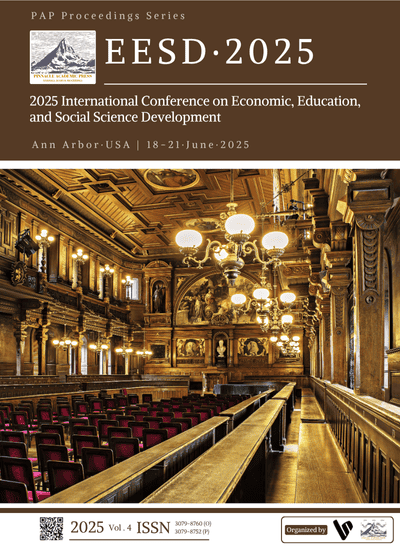Skulls across Civilizations: A Comparative Study of Eastern and Western Imagery of Death in Literature and Art
DOI:
https://doi.org/10.71222/v9j67978Keywords:
skull imagery, life and death, comparative culture, Daoism, Christian vanitas, literature, visual art, symbolism, mortality, globalizationAbstract
The skull, as a universal symbol of mortality, has traversed time and culture to become a profound site of meaning in both Eastern and Western civilizations. This study offers a comprehensive comparative analysis of skull imagery across literature and visual art, tracing its philosophical, religious, and aesthetic evolutions from antiquity to the contemporary era. Drawing on Chinese Daoist, Buddhist, and Confucian thought, and juxtaposing these with Christian theology, Gothic literature, and European art history, the paper uncovers how each tradition approaches the existential dilemma of life and death through distinct symbolic systems. Eastern traditions often employ the skull as a medium of transcendence and natural harmony, while Western representations emphasize sin, vanity, and redemption. Through interdisciplinary analysis using literature review, iconography, and image interpretation, the paper reveals how the skull transforms from a symbol of horror into a cultural prism refracting human concerns with meaning, impermanence, and spiritual inquiry. Ultimately, despite cultural divergences, the skull serves as a shared metaphor for humanity's poetic and philosophical confrontation with mortality.
References
1. T. Seiber, "Power and pictures on the threshold of life: Brain death and visual culture," Routledge Handbook of Health and Media, Routledge, 2022, pp. 92-102, doi: 10.4324/9781003007661-9.
2. K. Sekita, "Morbid Phantasies: The ‘After-Death’and the Dead between Imagination and Perception," The Imagination of the Mind in Classical Athens, Routledge, 2023, pp. 103-125, doi: 10.4324/9781003147459-6.
3. D. Margócsy and J. Mathew, "Vesalius and Pulicat: Skeletal imagery in seventeenth-century south India," Endeavour, vol. 49, no. 3, 2025, Art. no. 101014, doi: 10.1016/j.endeavour.2025.101014.
4. C. M. Wilkinson et al., "Revealing the face of Ramesses II through computed tomography, digital 3D facial reconstruction and computer-generated Imagery," J. Archaeol. Sci., vol. 160, 2023, Art. no. 105884, doi: /10.1016/j.jas.2023.105884.
5. J. Huacuja, "Chicana women artists draw inspiration from the virgin of Guadalupe: Over the past decades, Chicana artists have used Our Lady of Guadalupe to emphasize political issues, particularly around immigration," Nat. Cathol. Rep., vol. 60, no. 5, 2023, pp. 13-15.
6. K. Somerville, "Vanitas: The Art of Death and Decay," Missouri Rev., vol. 46, no. 2, 2023, pp. 17-31, doi: 10.1353/mis.2023.a901082.
7. N. Gentle, "A Set of Liturgical Vestments and Textiles Made for the Requiem Mass in the Early Eighteenth Century," Text. Hist., vol. 53, no. 2, 2022, pp. 153-170, doi: 10.1080/00404969.2024.2332869.
8. V. Tiesler and V. E. Miller, "Heads, Skulls, and Sacred Scaffolds. New Studies on Ritual Body Processing and Display in Chichen Itza and Beyond," Anc. Mesoam., vol. 34, no. 2, 2023, pp. 563-585, doi: 10.1017/S0956536120000450.
9. C. Bach, "The subgroups of the human remains trade on Instagram. A case study," Mortality, 2025, pp. 1-18, doi: 10.1080/13576275.2025.2490892.
10. M. Thomas, Toward Eternity: An Artistic Exploration of Death and the Fear of Dying, Diss. Middle Tennessee State University, 2024.
11. K. Fero, "Resistant Imagery in Struggles for Justice," What people are saying about No Justice, No Police?, 2023, p. 76. ISBN: 9781789049466.
12. M. Janík et al., "Death by scythe: Where forensic pathology meets arts and symbolism," Forensic Sci. Int. Rep., vol. 9, 2024, Art. no. 100362, doi: 10.1016/j.fsir.2024.100362.
13. M. Guarino, "Burials inside Churches in Naples. The Boundaries between Life and Death and Purgatory," Hum. Evol., vol. 39, no. 3-4, 2024, pp. 217-239.
14. C. Levine, "Religion and Power in Haiti: An Evaluation of Catholic Syncretism in Haitian Vodou," Delos, vol. 38, no. 1, 2023, pp. 41-118, doi: 10.5744/delos.2023.0003.
15. R. E. Menzies and D. Veale, "Creative approaches to treating the dread of death," in Existential concerns and cognitive-behavioral procedures: An integrative approach to mental health, Cham: Springer International Publishing, 2022, pp. 75-92, doi: 10.1007/978-3-031-06932-1_5.
Downloads
Published
Issue
Section
License
Copyright (c) 2025 Shimiao Su (Author)

This work is licensed under a Creative Commons Attribution 4.0 International License.



